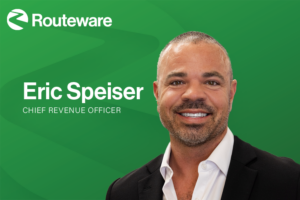College? University? Trade School? We’ve Got You Covered
Today’s waste industry is a dynamic and fast-moving one, and the need to adapt to constant industry changes has never been greater. Evolving recycling markets, increasing overheads, changing regulations and innumerable daily operational challenges are just a few of the ongoing demands institutions face.
Communications programs everywhere have had to adapt to be able to keep their recycling guides up to date and accurate as soon as changes in what’s accepted occur. Signage and printed recycling guides quickly become outdated as these changes occur – meaning digital communications, that you can quickly update yourself, are the way to go.
Digitizing at least some of your campus engagement can reap massive benefits, and, most importantly, make waste and recycling guidelines easy to find for the campus community.
Digital Communications
Software-as-a-Service (SaaS) models proliferate the waste industry, meaning access to top-of-the-line technology has never been more affordable. Having a solid waste and recycling app or cloud-based communications platform at your disposal means you can solve age-old service and communications dilemmas without your IT staff having to do any of the heavy lifting. Read on for the top reasons to go digital with waste and recycling communications.
#1: Reduce Contamination
Contamination costs money, period. When your audience cannot get quick answers on disposal questions, the resulting guesswork can have costly implications. Recent market changes due to China’s National Sword Ruling have exacerbated this dilemma. Providing a digital platform that delivers recycling education helps to cut contamination where it begins: the community
#2: Real-Time, All the Time
App-based solutions allow you and your staff to quickly update waste and recycling guidelines as changes happen. Digital communications technology allows you to be proactive in your messaging and keep students, faculty, and staff informed and well-engaged.
#3: Build Trust with Your Audience
A net benefit of the digital approach is that students, faculty, and staff are not guessing about what goes where. When information is a click away or simply arrives through an alert, the experience is inherently positive. Proactively educating your audience through targeted digital messaging allows you to take control of the conversation. When you deliver answers right when residents need them, it builds trust in your waste and recycling program.
#4: Meet Today’s Expectations
In the age of Google and smartphones, your target audience’s attention span has changed. They expect answers at the speed of a search rather than having to dial in for their queries. Mobile solutions are no longer considered a luxury; they are an expectation in today’s world. SaaS models should allow you to give students, faculty, and staff exactly what they want quickly and seamlessly.
#5: Overcome Language Barriers While Reducing Wishscycling
Your campus is likely a diverse community, where many languages are spoken. The issue with printed educational materials and signage is that it can be hard to offer in more than one language. With digital tools, you have the option to add language capabilities to be able to address a broader audience while educating students, faculty, and staff on what goes where.
#6: Program Promotions
Digital communication platforms inherently open up new avenues to connect with your target audience. Take advantage of the technology to notify users about waste diversion practices, seasonal promotions, new services, and much more.
#7: Save Money
Web portals and mobile apps should save you money, not increase overhead. These technologies are often cost-neutral within the first year of service via operational efficiency gains such as paying less in contamination fees. Further, traditional communication channels like printed educational materials are costly, time-consuming to create, and increasingly ineffective while having a negative impact on the environment. Digital communication tools address all of these costs and concerns in one fell swoop by removing the need for costly printed collateral and helping to curb contamination.
#8: Data-Driven Insights
Perhaps one of the most overlooked elements of a digital communications strategy is the amount of information you can learn about your students, faculty, and staff through usage metrics. Most digital products have behind-the-scenes insight into your audience’s digital interactions and help illustrate areas of your program where you may need to apply some TLC. Being data-driven, which should, ultimately, strengthen your campus engagement so you can provide the best service possible with up-to-date analytics.
Digital tools hold great potential to enhance and optimize various aspects of communications, and this potential will only increase with time. Digital is a big part of the recipe for success for your waste and recycling program.
Want to learn more? Let’s talk.
[/et_pb_text][/et_pb_column][/et_pb_row][/et_pb_section]




